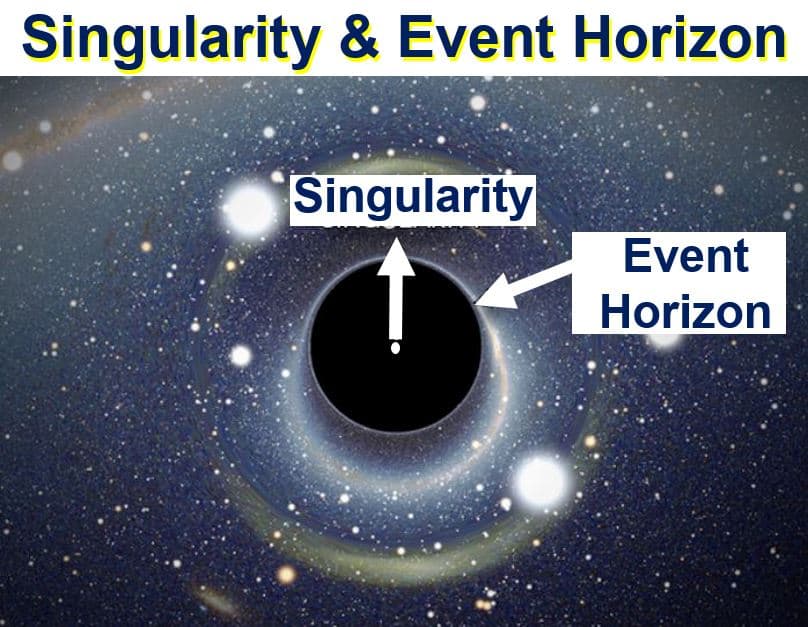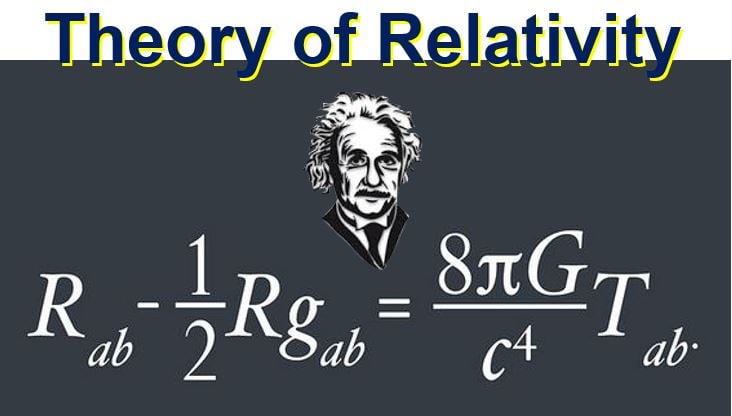A 5D black hole simulation breaks down the theory of relativity by Einstein, that is, if five dimensions exist in our Universe, say theoretical physicists from Queen Mary University of London and the University of Cambridge. In other words, much of our current laws of physics would become invalid if 5D black holes exist.
The scientists carried out a 5D black hole simulation using COSMOS, Europe’s most powerful computer.
The researchers explained in the academic journal Physical Review Letter (citation below) that they managed to successfully simulate how a ring-shaped black hole could cause Einstein’s general relativity to break down.
 Simulation of a black hole shaped like a thin ring (top left), which gives rise to several ‘bulges’ (top right) connected by strings that gradually get thinner (bottom) over time. (Image: Physical Review Letters)
Simulation of a black hole shaped like a thin ring (top left), which gives rise to several ‘bulges’ (top right) connected by strings that gradually get thinner (bottom) over time. (Image: Physical Review Letters)
Einstein’s theory of relativity is the foundation of modern physics. If it were broken down, which their simulation appears to have done, it would mean going back to the drawing board and looking for a new theory that would explain our Universe, the age of stars and re-understanding much of what we currently know about the laws of physics.
For this black hole to exist, the scientists emphasized, the Universe would need to have at least five dimensions.
Experts unsure about how many dimensions exist
Theoretical physicists have long debated about how many dimensions exist in the Universe. Some say there are ten, eleven or thirteen dimensions, but nobody really knows. Scientists can become quite passionate about their particular belief, even though they know that they cannot be sure.
Most theoretical physicists are partial towards one particular number of dimensions because it fits into the multidimensional mathematical formula they have developed to represent the nature of the Universe.
String theory, which expresses the multi-dimensional Universe in terms of little strings, estimates there are ten or 11 dimensions.
In this latest study, Markus Kunesch and Saran Tunyasuvunakool from the University of Cambridge, and Pau Figueras from Queen Mary University of London, simulated a black hole shaped like a thin ring, which gives rise to several ‘bulges’ connected by strings that gradually get thinner over time.
Over time, the strings become so thin that they pinch off into a series of extremely small black holes, rather like when a thin stream of water comes out of a tap and breaks up into little droplets.
Theoretical theorists first ‘discovered’ ring-shaped black holes in 2002. This is the first time, however, that anybody has managed to successfully simulated their dynamics using a supercomputer.
Causes Einstein’s equations to break down
If there were five dimensions and this type of black hole could form, a ‘naked singularity’ would appear, which would cause Albert Einstein’s equations behind general relativity to break down.
Our current understanding of gravity is based on Einstein’s theory of general relativity. Everything we know about our Universe, the age of stars, and even the GPS signals millions of us use for navigation, is based on his equations.
In part, general relativity tells us that matter warps the spacetime around it, and what we understand as gravity is the effect of that distortion.
Ever since 1916 – exactly 100 years ago – when Einstein’s theory of relativity was published, his equations have passed every test scientists have thrown at them. However, there is one limitation – the existence of singularities.
 Einstein said a singularity exists at the centre of a black hole, surrounded by an event horizon. In this study, the scientists suggest that a singularity might exist outside of the event horizon. (Image: sacredgeometryinternational.com)
Einstein said a singularity exists at the centre of a black hole, surrounded by an event horizon. In this study, the scientists suggest that a singularity might exist outside of the event horizon. (Image: sacredgeometryinternational.com)
What is a singularity or event horizon?
A singularity is a point where some property is infinite. For example, according to classical theory, the centre of a black hole has a singularity where its density if infinite, because a finite mass is compressed to a zero volume, hence it is a singularity.
The Physics of the Universe website defines a singularity in a way that is easy to understand:
“In the centre of a black hole is a gravitational singularity, a one-dimensional point which contains a huge mass in an infinitely small space, where density and gravity become infinite and space-time curves infinitely, and where the laws of physics as we know them cease to operate. It is the point where all laws of physics break down.”
Einstein told us that singularities exist at the centre of a black hole, surrounded by an event horizon – the point of no return.
There is a boundary around a black hole – the event horizon – beyond which everything, even light, must go towards the black hole. Once you have crossed that boundary you’ve had it, resistance is futile, you will get pulled in.
 Einstein’s theory of relativity would become invalid if singularities existed outside of the event horizon.
Einstein’s theory of relativity would become invalid if singularities existed outside of the event horizon.
If even light cannot escape when inside the boundary of an event horizon, it means that we cannot see it (we need light to see things).
Markus Kunesch, a PhD student at the Department of Applied Mathematics and Theoretical Physics (DAMTP), University of Cambridge, said:
“As long as singularities stay hidden behind an event horizon, they do not cause trouble and general relativity holds – the ‘cosmic censorship conjecture’ says that this is always the case. As long as the cosmic censorship conjecture is valid, we can safely predict the future outside of black holes.”
“Because ultimately, what we’re trying to do in physics is to predict the future given knowledge about the state of the universe now.”
Can a singularity exist outside the event horizon?
We know that a singularity exists inside the boundary of an event horizon, but could one exist outside? If that were possible, perhaps we would be able to see it. However, it would still represent an object with infinite density and zero volume, which makes no scientific sense, i.e. it causes the laws of physics (as we know them) to break down.
 The COSMOS Supercomputer (background) with Stephen Hawking, and left-to-right Andy Barrington (SGI), John Scarborough (SGI), Simon Appleby (SGI), Paul Shellard (COSMOS@DiRAC Director) and Andrey Kaliazin (COSMOS System Manager). (Image: University of Cambridge)
The COSMOS Supercomputer (background) with Stephen Hawking, and left-to-right Andy Barrington (SGI), John Scarborough (SGI), Simon Appleby (SGI), Paul Shellard (COSMOS@DiRAC Director) and Andrey Kaliazin (COSMOS System Manager). (Image: University of Cambridge)
The authors write that such a thing, called a ‘naked singularity’, might exist in higher dimensions.
Saran Tunyasuvunakool, who is also a doctoral student at DAMTP, said regarding naked singularities:
“If naked singularities exist, general relativity breaks down. And if general relativity breaks down, it would throw everything upside down, because it would no longer have any predictive power – it could no longer be considered as a standalone theory to explain the universe.”
Most of us perceive our Universe as having four dimensions – the three everyday dimensions of width, height and depth, plus the fourth dimension of time – which when combined we call spacetime.
However, as mentioned earlier, in some branches of theoretical physics, including string theory, there could be up to eleven or even more dimensions.
The additional dimensions could be super-tiny and hard to detect, or enormous and expansive. As we are only physically capable of perceiving three dimensions plus time, the existence of extra ones can only be inferred through high-energy experiments, such as those that are currently being conducted at the Large Hadron Collider (LHC), built by the European Organization for Nuclear Research (CERN) and located in Switzerland.
Studying Einstein’s equations in higher dimensions
In his 1916 publication, Albert Einstein made no mention of how many dimensions the Universe has or might have, so scientists have been studying general relativity in higher dimensions to see whether cosmic censorship still holds.
When the scientists discovered these ring-shaped black holes in their 5D simulation, they hypothesized that they could break up, and a naked singularity might form.
What this scientific team has found is that when the ring is thin enough, in theory naked singularities could be formed.
They used Europe’s most powerful computer, COSMOS, which is housed at the University of Cambridge, to perform a full simulation of Einstein’s complete theory in more than four dimensions, which allowed them to not only confirm that these ‘black rings’ are highly unstable, but to also determine what eventually happens to them.
Black rings generally collapse back into a sphere, with the singularity inside the boundaries of the event horizon. Extremely thin black rings can become sufficiently unstable to form ‘bulges’ connected by ever-thinning strings, which after some time break off and form a naked singularity.
Tunyasuvunakool said regarding using supercomputers to study Einstein’s theory:
“The better we get at simulating Einstein’s theory of gravity in higher dimensions, the easier it will be for us to help with advancing new computational techniques – we’re pushing the limits of what you can do on a computer when it comes to Einstein’s theory.”
“But if cosmic censorship doesn’t hold in higher dimensions, then maybe we need to look at what’s so special about a four-dimensional universe that means it does hold.”
The cosmic censorship theory – if our Universe has four dimensions – is widely expected to be true. However, if that is ever disproved, we will have to find an alternative way of explaining the Universe.
One possibility may be found in quantum gravity. It approximates the general relativity equations far away from a singularity, and also provides a description of new physics near to the singularity. Quantum gravity is a branch of theoretical physics that attempts to unify the subjects of quantum mechanics (study of motion and interaction of subatomic particles) and general relativity.
Citation: “End Point of Black Ring Instabilities and the Weak Cosmic Censorship Conjecture,” Saran Tunyasuvunakool, Pau Figueras and Markus Kunesch. Physical Review Letters 116, 071102. 18th February 2016. DOI: org/10.1103/PhysRevLett.116.071102.
Video – How many dimensions are there?
Andrew Pontzen & Tom Whyntie try to explain what dimensions are and how many our Universe might have.

